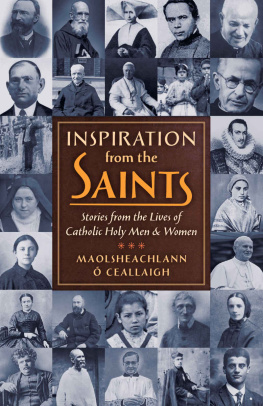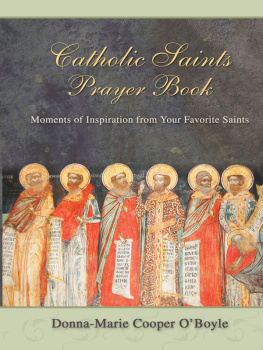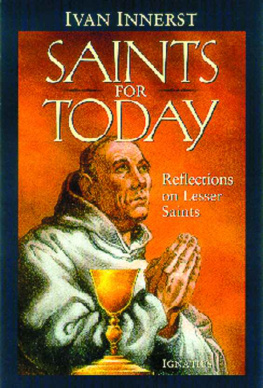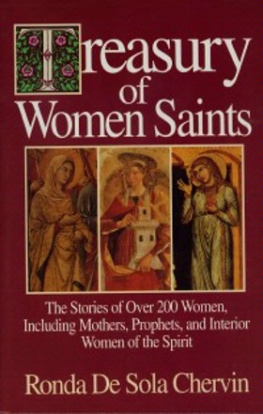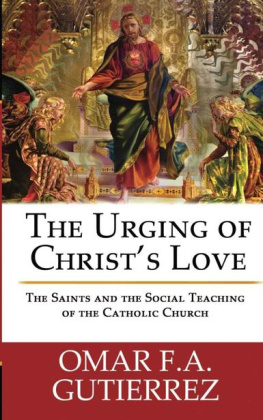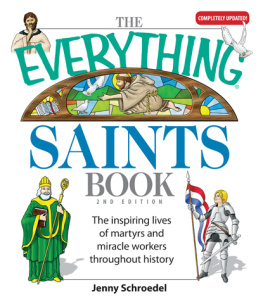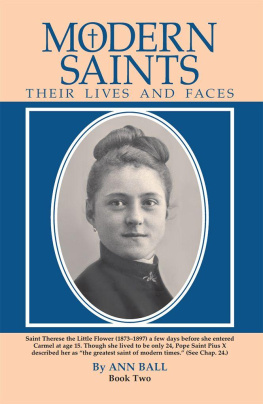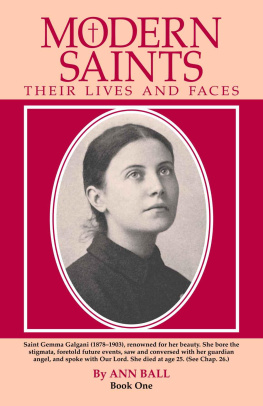169 Monitor St.
Brooklyn, NY 11222
First of all, I would like to thank my beautiful wife Michelle, my muse and inspiration in this project as in all things.
Secondly, Id like to thank all my family for their help during the writing of this book, especially my father, who has always encouraged my writing.
Thanks to the readers of my blog Irish Papist for all their suggestions for the book, and for their continued interest in my writing. Thanks also to Jonathan Barry and the other members of the Gothic Club, whose literary and artistic achievements have galvanized my own efforts. I look forward to many more slices of lemon drizzle cake, and many more discussions of great horror films and books.
My friend Roger Buck contributed an incredible amount of time and attention to this project. I cannot thank him enough. Im also indebted to Daniel Conneally for his interest and support, to Fr. Donncha hAodha for his encouragement and help, and to Fr. Paul Stenhouse for his eagle eye and suggestions.
The bulk of the research for this book was done in the Central Catholic Library, Dublin. Therefore I must thank all the staff and volunteers who make this unique resource available in the face of so many challenges.
Thanks to the following individuals and companies for kindly allowing me permission to quote material:
Glen Dallaire of the St. Gemma Galgani website.
Darragh Redin of Veritas Publications.
Libreria Editrice Vaticana, for various ecclesial documents.
Fr. Paul Spencer CP for the photograph of St. Charles of Mount Argus.
Thanks to ICS Publications for quotations from Story of a Soul, translated by John Clarke, O.C.D. Copyright (c) 1975, 1976, 1996 by Washington Province of Discalced Carmelites, ICS Publications, 2131 Lincoln Road, N.E. Washington, DC 20002-1199 U.S.A. www.icspublications.org
Thanks to the Catholic Truth Society for Mary Craigs passage on Maximilian Kolbe, whose original source is Blessed Maximilian Kolbe, Priest Hero of a Death Camp, Mary Craig, Catholic Truth Society, London, 1973.
Thanks to The Word Among Us, 7115 Guilford Dr. #100, Frederick, MD 21704, for quotations from Mitch Finleys The Rosary Handbook: A Guide for Newcomers, Old-Timers and Those in Between.
Lastly, I must thank the subject of this bookthe saints themselves. I ask them to pray for me, for everyone listed in these acknowledgments, and for everybody who reads this book!
Contents
For most of my life I didnt care very much about the saints. In fact, it would be truer to say that I didnt care about them at all.
Long before I realized that the first day of November was All Saints Daythe day that Catholics (and many other Christians) honor all the saints, including the countless saints who have never officially been proclaimed as suchI was much more excited about the evening that came before it: Halloween. I loved horror movies and spookiness and ghost stories. I still do. The lives of the saints, insofar as I was aware of them at all, seemed unspeakably dull.
It took me a long time to realize that the very same thing that drew me to horror movies and spooky stories could be found, in a much greater concentration, in the lives of the Catholic saints. In fact, it was this same quality that drew me to nearly everything that ever excited me.
What was this quality that drew me so? Otherworldliness is the best word I can think of to describe italthough intensity, transfiguration, purity, and many other words also apply.
This is a book about Catholic saints, a book intended to inspire the reader with their stories and their words. But, since its a very personal book, I want to first describe my own journey from a complete lack of interest in the saints to a deep fascination with them. And, strange as it might sound, I think that a comparison between All Saints Day and Halloween, in terms of what they have meant to me through my life, may be the best way to do this.
As most people know, the full name of Halloween is The Eve of All Hallows, and All Hallows is another name for All Saints Day. I grew up in Ireland, where I still live. Halloween, with all its monster masks, bonfires and fireworks, was a big deal in Ireland. Indeed, I didnt realize until relatively recently that the celebration had its roots in my own country, in the pagan festival of Samhain (pronounced sow-wan). Samhain was a harvest festival, and a time when the boundary between the world of the living and the dead was supposed to become particularly thina time when the dead might be expected to wander into the world of the living.
The idea that All Saints Day was invented to replace Samhain is just a mythindeed, there was a time when All Saints Day was celebrated on the 13th of May. The relationship between the two days, and exactly how and why All Saints Day came to be celebrated on November 1st, is rather obscure. One way or another, the ancient pagan festival had borrowed its name from the Christian festivalbut, in the popular mind (and certainly in my own mind), All Hallows was completely overshadowed by Halloween.
One particular Halloween party that I attended when I was a little boy had a profound, lifelong effect on meperhaps nothing in my entire life has ever had a bigger effect. It was quite a modest party, mostly full of children but with a good sprinkling of adults too. All the usual trappings of a Halloween party were presentfruit, nuts, sweets, and the curranty cake that the Irish call barmbrack. I remember some kids playing bob-the-apple, the game in which players try to catch an apple in a basin of water with their teeth. Most of the children were dressed up (which is the Irish term for fancy dress) in various costumesI must have been too, though I dont remember what I was dressed up as.
Outside, the evening air crackled with fireworks. I remember listening to some older boys discussing the various fireworks on display. It pleased me that there were actually different kinds of firework and that they had names. The firework whose name seemed most exotic to me, and which stirred my childish imagination in a way I can still vividly remember, was the Catherines wheel. It would be many, many years before I realized that it was named after a saintSt. Catherine of Alexandria, who was condemned to be martyred on an instrument called a spinning wheel (which broke up when she touched itnot that this saved her, since she was then simply beheaded).
The thing that enthralled me was that this evening was so different. It was special. The suburb I lived in had been transformedit seemed like a different place entirely. From that night on, I craved that same kind of specialness with an almighty craving. I yearned for special times and special places. Just as Halloween was all about spookiness, and Christmas was all about merry-making, I wanted everything to be

